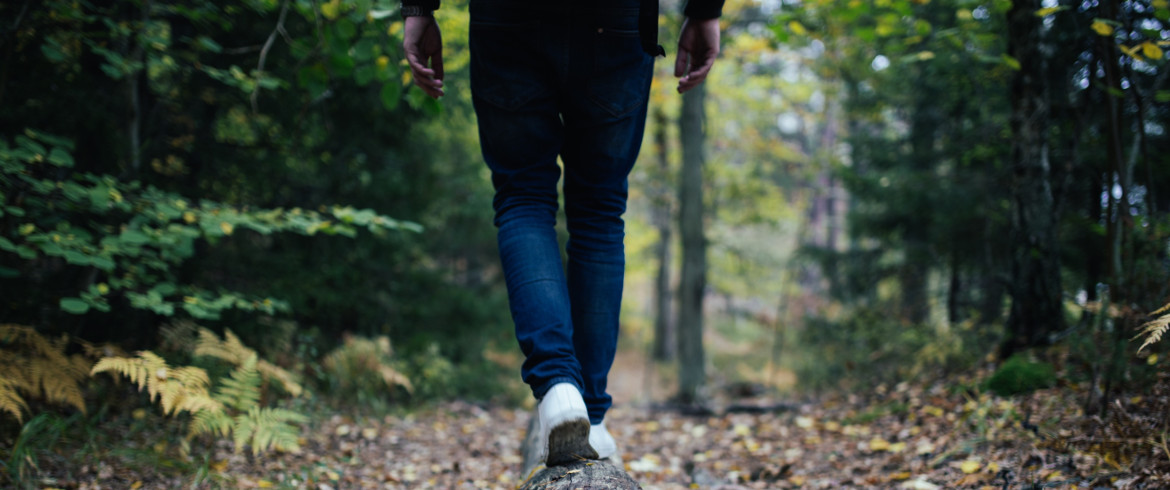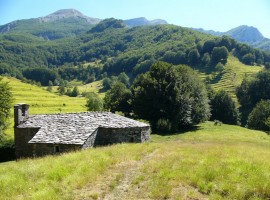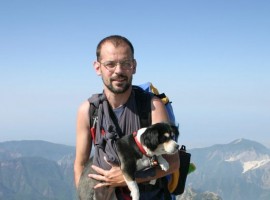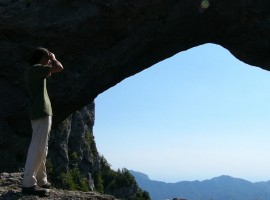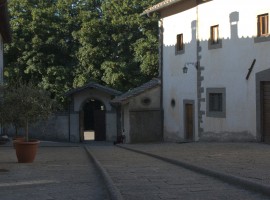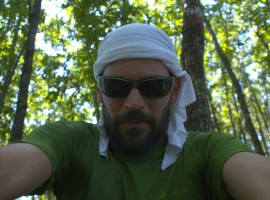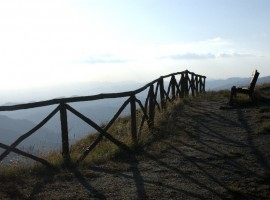400 km on foot in the unspoiled nature of the Italian Apennines, through small hamlets, ancient hermitages, parks and natural forests. 17 days spent walking along the Escursione Appenninica, traveling at 3 km per hour to discover the silence and the unique landscapes of a hidden and almost unknown Italy. 17 legs through 4 regions (Umbria, Marche, Toscana and Emilia-Romagna), 11 provinces e 3 natural parks. This is the adventure of Graziano Viviani to discover in his book “400 Km d’Appennino”, that you can foretaste in this short interview.
If the idea of green travelling appeals to you, and if you’d rather walk than take the plane. If you’re curious to discover all the worlds Italy has to offer you. If you’ve always dreamed of traveling on foot and experiencing slowness. If you want to live the journey as a real adventure, to find yourself and your limits. Graziano Viviani’s “400 km d’Appennino. Viaggio a piedi lungo la Grande Escursione Appenninica” (400km of Apennines. Traveling on foot along the Great Excursion in the Apennines) narrates exactly this experience. A few pages of his book were enough for our Silvia to be so interested in this incredible but simple journey along our Apennines, to decide to meet and interview Graziano. And here is what he told us:
How was your “400 km di Appennino” journey born?
I was born in Carrara, but despite the closeness to the Apuan Alps, it was not until I turned 30 that I wore a pair of trekking shoes. I didn’t even know what a trail was. My family isn’t particularly fond of mountains, but I have always been taught love and respect for animals and nature. Though, I never spent a holiday in the mountains or on the snow. Growing up, my friends weren’t fond of mountains either. But thanks to Paola, that one day would have become my wife, I first approached this unknown world to me. As a kid, she used to spend holidays in the mountains of South Tyrol. 15 days in the Pusteria Valley were enough for me to let that hidden seed sprout and to change my world.
Once back home in Carrara, I couldn’t help myself looking at those mountains, the Apuans. Until that moment, they had just been unknown to me, but I was now eager to get immersed alone in the nature. I literally started exploring them, whose peaks had names I didn’t even know. Excursion after excursion, trip after trip, I started looking even for their hideaway corners, and today I can say I got to know them fairly well. But after a while they became too narrow for me. Every time I climbed to a peak I couldn’t stop looking further, to the close Apennines. I love mountains from foot to top and I like walking alone in the mountains, but I never challenged myself with something demanding and extreme hiking, though long distances attract me. I especially love the silent noise of nature, only broke by the sound of my steps and sometimes loneliness almost gives me a shiver of pleasure.
- Apuan Alps, via grazianoviviani.it
- Graziano Viviani with his dog, Cresta Tambura, Apuan Alps, via grazianoviviani.it
- Monte Forato, Apuan Alps, via grazianoviviani.it
And so I began linking some stretches of trail in the Apuan Alps and in the Apennines. First, with 2 days long journeys, then 3 and even 4 days long. At that point, I felt ready for a longer one. And because I believe that to go on adventures, you don’t always need to travel far away, I planned my own adventure in the Apennines. Doing some research, I discovered a trail named GEA (Grande Escursione Appenninica – The Great Apennine Excursion).
It was originally thought of in the 80s by Gianfranco Bracci, the first to officially complete it together with no less than someone named Reinhold Messner. They left from Bocca Trabaria and walk along the whole GEA to get to Passo dei due Santi, the crossing point dividing Toscana, Emilia Romagna and Liguria, the northern point of the Northern Apennines. It took them almost 3 weeks and 430km in total.
My own journey along the GEA was a little different. I left from Bocca Trabaria (geographical point separating Toscana, Umbria and Marche; also the precise point dividing the Northern from the Central Apennines) as well, and followed their trail until I got to San Pellegrino in Alpe, a small village overlooking the Garfagnana. From here, I managed to find another track that would allow me to get the Apuan Alps (my hometown mountains) linked, walking on their renowned “Alta Via” (literally, the ‘High Way’), and to finally reach Carrara, where I used to live at that time.
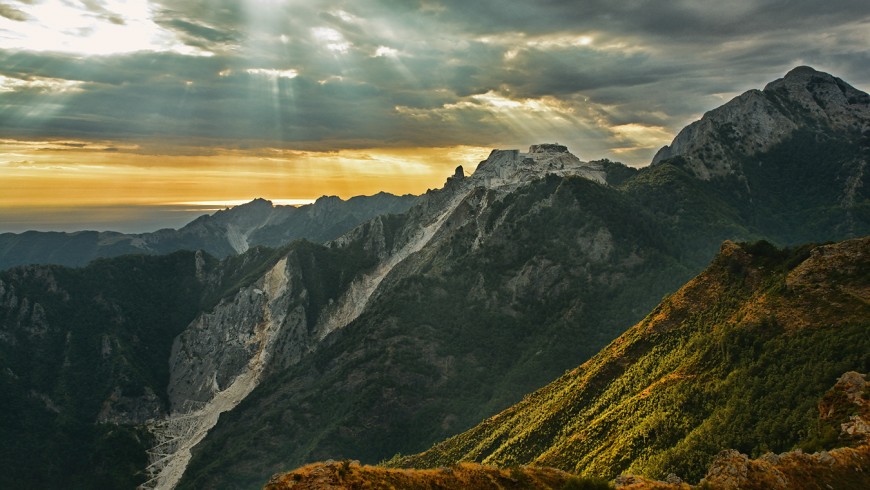
Which was your most incredible discovery in the journey from Arezzo to Carrara?
This project had, among other things, the aim of getting to know myself better. Today, 10 years after, I can say that that journey allowed me to discover my physical and mental limits. But 10 years after, I can also say that that adventure isn’t over yet, as it was just the beginning of a change in my mindset and in my approach with nature.
The first three days of that journey were incredible. I had never suffered so much to win over nature. I had planned everything, or at least this was what I thought, and everything was expected to go smoothly, how my mind had it all planned. But obviously (and luckily) it didn’t go like that: during these 3 days spent walking I discovered that I was actually looking for a personal contact with nature. To do so, I had to let go of stereotypes that our everyday life has imposed on us, and most of all I had to get to know myself perfectly well, in my weaknesses, my limits and my strengths.
These 3 days of drought, hunger, uncertainties, allowed my body and mind to communicate in the best way possible and to react to good and bad stimuli as quick as possible, step after step. The most amazing discovery was exactly the one of the real me, of my limits as men: I ignored and went beyond them, I let myself be able to interact with nature.
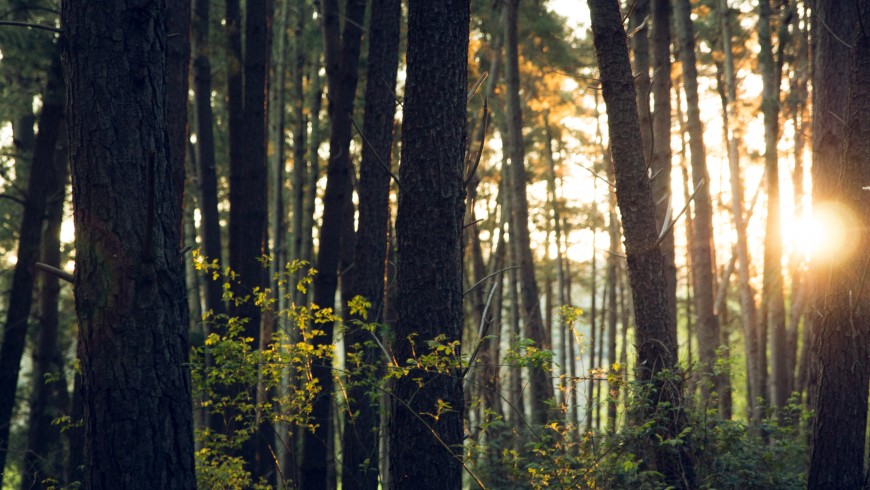
Which were the three most significant stages in your journey on foot?
This route is incredible: it goes through amazing places, both in terms of landscapes and in terms of their history. In these 17 stages I walked 400km, with 1500m of difference in altitude going up and down. The longest leg was almost 40km long, the shortest almost 11,5km, with 24km on average. My ititnerary crossed 4 regions (Umbria, Marche, Toscana and Emilia-Romagna) and 11 Provinces (Perugia – Pesaro-Urbino – Arezzo – Rimini – Bologna – Firenze – Prato – Pistoia – Modena – Lucca – Massa Carrara). I crossed 3 natural parks: Ho attraversato 3 Parchi naturali: the Natural Park of the Tuscan-Emilian Apennines, the Parco Foreste Casentinesi ed il Parco of the Apuan Alps.
17 days walking along history, culture and unspoiled natural environments of a hidden Italy, that not everybody know. I walked for days and days completely alone through the Park of Foreste Casentinesi, and I could touch the dark atmosphere of the Sasso Fratino Reserve. I was hosted by the monks in Camaldoli, I visited Michelangelo Buonarroti’s native village and I went through the whole Mugello, adapting time by time to the different environments: from beech forests to the warm and sunny Tuscan valleys, from chestnut forests to the pastures of the High Apennines.
From the small glacial lakes to the Apuan Alps, I was always thrilled by so much beauty. I was glad to walk and discover unique places, not so well-known, and even happier in the evening, tired but peaceful, eager to contemplate the stars before falling asleep in my sleeping bag.
To choose only 3 stages is a really difficult task for me. But if I really have to choose I would say stage n°3. In fact, I visited the Cerbaiolo hermitage, where I met Ms. Chiara, a lay lady from Ravenna who decided to retire in this small and historical gem when she was very young. Alone, she brought this ancient and tumbledown hermitage, which was built around year 1000, to its original beauty. I was lucky enough to hear the story of her life, spent in a unique place in contact with animals.
Another significant stage was stage n° 5: I left from Santuario di La Verna and managed to reach by the end of the day the Camaldoli hermitage, where I was hosted in the hermitage thanks to the help of Padre Francisco, as the pilgrims used to do once.
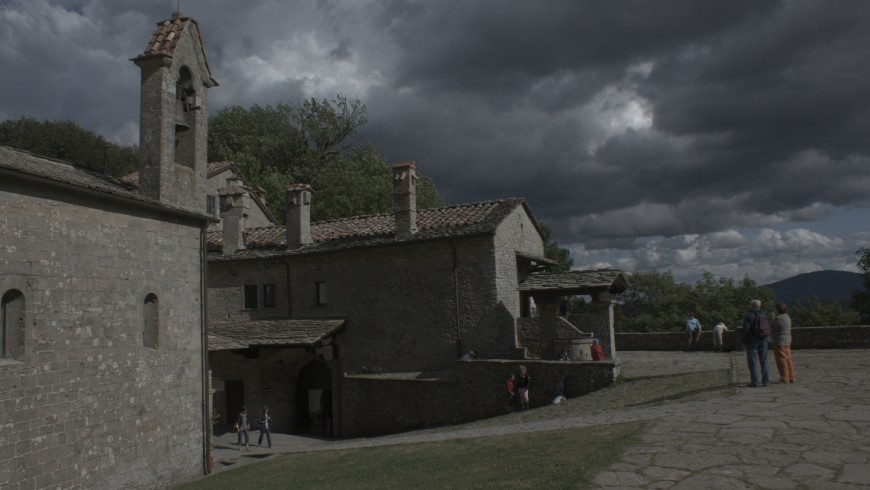
- Camaldoli Hermitage, via grazianoviviani.it
- Graziano Viviani
- Falterona’s Belvedere, via grazianoviviani.it
Last but not least, stage n°9, through Passo della Futa and its German military cemetery. After 8 days of walking in almost complete solitude, I met an upsetting reality. Imagine yourself walking among 30 thousand names of young people as me. People who left their hometowns to follow an ideal (or at least so did they think), without thinking of not having the chance to go back. I can’t hide the emotions I felt in those moments, while reading names, day of birth and death. I kept looking at that never-ending line of pain until I noticed a small red object on one of the gravestones. Getting closer I could see it was a heart, maybe made of ceramic. It still bright and vivid red almost clashes with the surrounding environment. There was an epigraph written in German: “The gravestone reports the name of Private First Class (Obergefreiter) Hinrich Arnold, born on the 21-5-1912 e deceased on the 23-9-1944. He was 32 years old.”
This small red heart, more than 60 years after, was still there, in the overwhelming silence. It proved the thoughts and feelings that are still alive in that hand that left it here. In that grey hecatomb, that apparently meaningless red spot, is a symbol of eternal love and lets hope live.
Which are the advantages of a slow-journey that you personally experienced?
Such a journey, a slow one, allows you to be in harmony with the environment and places you go through. Walking at a 3km/h rate, you can really watch things and notice the details that would otherwise be difficult to spot in other circumstances. And I also walked alone, with a big trekking backpack. Everyone I met was curious about my journey. They would come closer to me and interact, almost as if that invisible shield that surrounds us in our everyday life had disappeared.
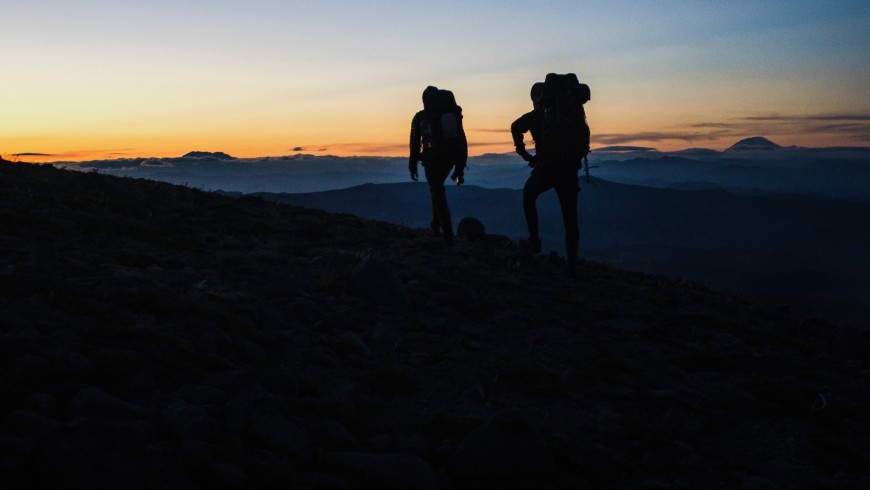
5 tips to plan your next holiday on foot
Backpacking along the Grande Escursione Appenninica as I did, is surely not extreme hiking, but it surely is demanding. My first suggestion I feel like giving to those who would like to plan a holiday on foot, is to choose a track which reflects your own characteristics and physical possibilities.
To best deal with unexpected situations and to fully enjoy the places you walk through, physical preparation is also recommended and worth doing: my second tip is to exercise yourself to be in a good shape before leaving.
Third, get as much information as possible on the track to follow: climbs, descents, dangerous parts, distance between refreshments and water stations. Prepare yourself with anything you might need in case of difficulty.
Another tip is on equipment, which should be selected and chosen carefully for every possible problem but at the same time be light and basic. Every kilo becomes a ton when you have to walk such long distances and your knees might resent from this. You should have all the necessary in case of need, but weight is even more important! Luckily today you can find perfect materials that will help you.
And then, last and maybe the most important thing, leave your everyday life, your ideas and your mental stereotypes at home. You shouldn’t expect anything from such a journey, you should just live it step after step and day after day. I strongly believe that the beauty of this experience lies on understanding the difference between a holiday and a journey, keeping in mind that usually tourists never find what they are searching, while travelers never search what they find.
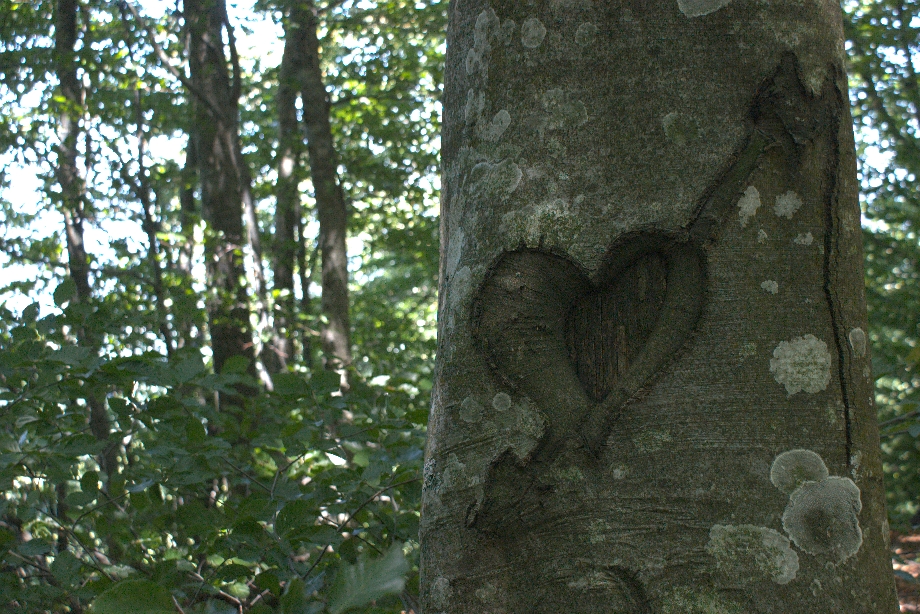
Is there anything left to say? Thank you Graziano for sharing your journey experience and some of your emotions along the 400km on foot.
Do not miss his incredible book, here in the e-book version.
Enjoy the reading, and enjoy your journey (on foot, of course)! 
